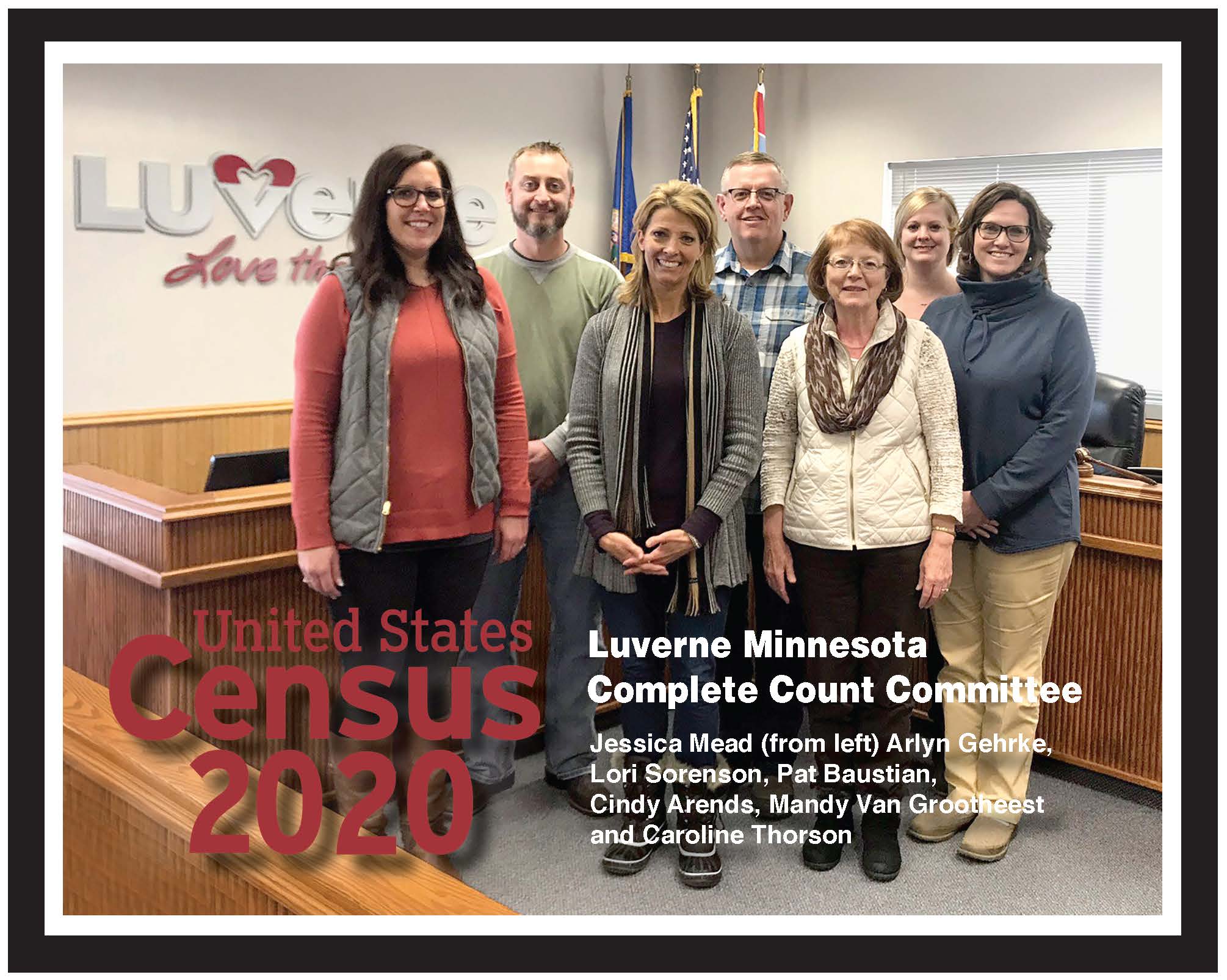
Monday, April 1, marks one year until the U.S. 2020 Census, and a group of volunteers are working to make sure every person living in Luverne is counted for the record.
The 2010 census counted 4,745 residents in Luverne after 89 percent of residents self responded to the survey.
Local leaders are hoping to improve participation in the 2020 census with eye toward reaching the 5,000 population threshold for more government support.
To do this they’re leaning on a first-ever Complete Count Committee to launch a census education campaign.
Luverne City Clerk Jessica Mead trained with the League of Minnesota Cities and the Minnesota State Demographic Center to learn how CCCs can improve census participation.
She then recruited a handful of volunteers to join Luverne’s CCC, based on their connections in the community and their areas of expertise related to census counts.
They include: Luverne Community Education secretary Cindy Arends, City Councilwoman and Luverne High School Teacher Caroline Thorson, Luverne Mayor Pat Baustian, Deputy City Clerk Mandy Van Grootheest, Land Management Office technician Arlyn Gehrke and Rock County Star Herald Editor Lori Sorenson.
Their mission is to encourage as many residents as possible to participate in the 2020 census and to share the message about why a complete census count is so important.
Census numbers dictate funding, political representation, business recruitment and more
In general census data helps plan roads, schools, hospital, senior centers and emergency services to best accommodate changing populations.
The data collected by the census also determines the number of seats each state has in the U.S. House of Representatives, and Minnesota is currently at risk of losing a seat in Congress, based on population.
Census data also helps business determine where they’ll locate based on market research.
But a big reason census data matters is that numbers add up to dollars.
“It comes down to money,” Mead said.
There are 16 major federal assistance programs that distribute funds to states and communities based on census data.
These include highway planning and construction, medical assistance programs, housing grants, Title 1 grants to schools, low-income home energy assistance, national school lunch funds and more.
For funding purposes, even one missed person could mean a forfeited $15,000 in funding for Minnesota over 10 years.
If communities are under counted, their federal assistance will include fewer dollars than the number of residents and households who need the funds.
Countdown to April 1, 2020, is underway
CCC members are focused on two primary education messages:
•census data is tied to government dollars for the community, and
•census data is secure and confidential.
“There are many barriers to participation, but statewide the top concerns are distrust in government and data security,’” Mead said.
The CCC’s role, therefore, will be to educate residents that it’s safe to share their census data and it’s in their interest to do so.
Any county or community can form a Complete Count Committee, but Luverne opted to do it for the 2020 census in light of reaching a count of 5,000 people.
“Luverne grew 2 percent in the 2010 census, and I was excited. Everyone else around us was down, and we were growing,” Mayor Baustian said.
“Are we going to grow in the next census? I’m absolutely positive.”
Population 5,000 is the threshold for many government programs that differentiate between “towns” and “cities,” and by and large “cities” carry more weight in terms of government funding support.
“My goal is to get us over 5,000,” Baustian said.
Information about the CCC and the 2020 census is available on the City of Luverne website, https://www.cityofluverne.org/2020census.


